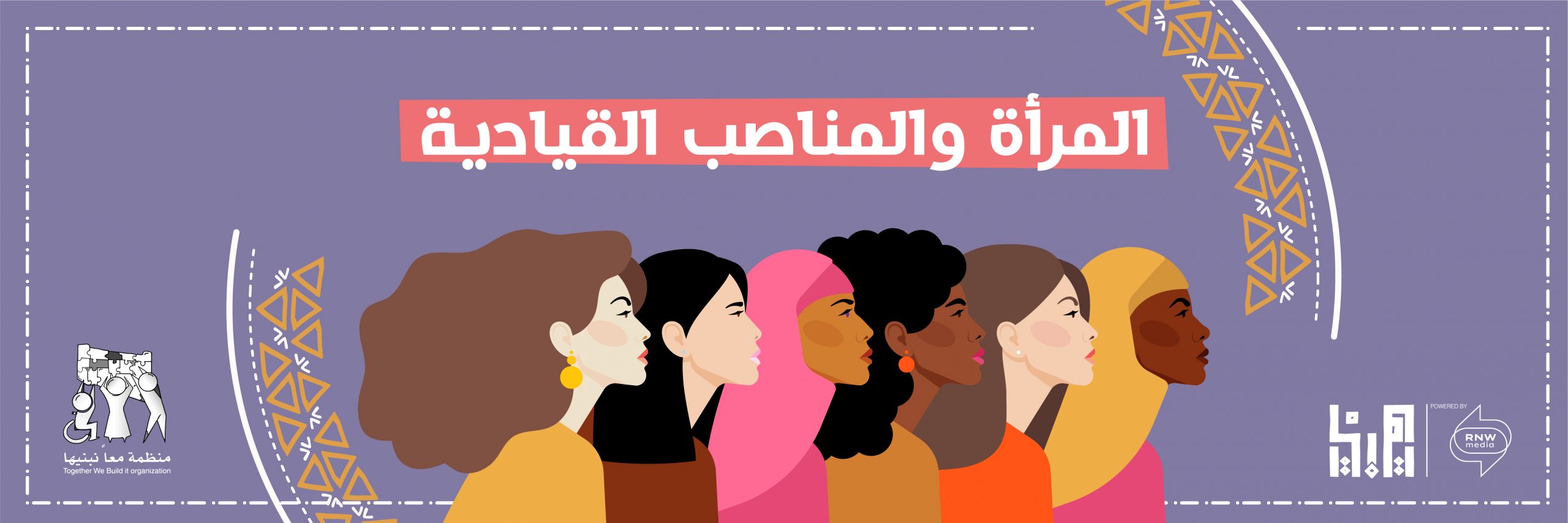
Huna Libya in partnership with Together We Build It (TWBI) organization has conducted its first survey for 2020 about women in leadership positions. The survey targeted young people in Libya, to get a general idea of their thoughts and how they perceive it.
The survey was launched on the 8th of March, which also happens to be The International Women’s Day and was open for two weeks. Although most of the public attention at that time was consumed by the news of the pandemic outbreak, we received about 5000 survey responses. We were able to reach the average response rate of previous surveys by Huna Libya which confirmed young Libyan people’s interest in this matter.
Huna Libya will be publishing the Survey results in consequent reports with assessments and recommendations as well as sharing some of the answers.
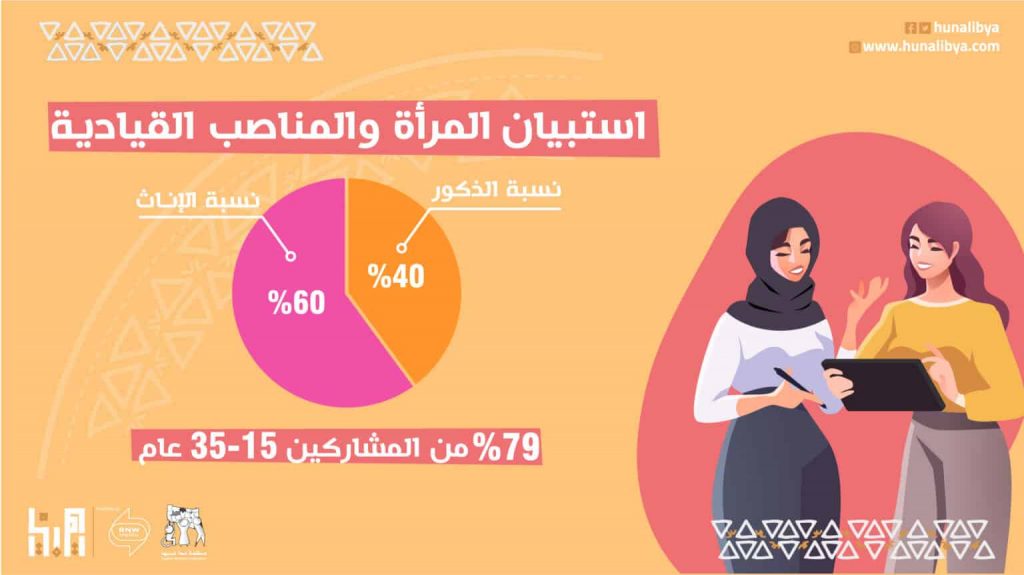
79% of respondents are 15- 35 years old
Background Characteristics of Respondents
The survey received about 5716 responses, 60% were females and 40% males, which shows women’s interest in this subject, as expected. The majority of female respondents were open to the idea and supportive while the male respondents showed conservatism and a more traditional outlook. 79% of respondents were in our targeted age group (15-35), 54 percent of which are college graduates. The rest of the respondents were on a wide rage, 15% were high school graduates, 13% have higher education, 6% have secondary education, 8% master’s degree holders and 2% PHD.
Demographically, the majority of respondents to our survey are from Tripoli at 40%, followed by Benghazi 11%, Misrata 3%, while Jabal Nafusa, Al Zawya, Sabha and Darna had 2% each. 6% were distributed over a number of cities. While 27% of the respondents, either intentionally or not did not write down where they’re from.
The data gathered from this survey, due to the diverse background of respondents guaranteed the inclusion of a large portion of Libyans. This enables it’s data to be used in setting future plans to enhance the role of women in leadership positions in Libya.
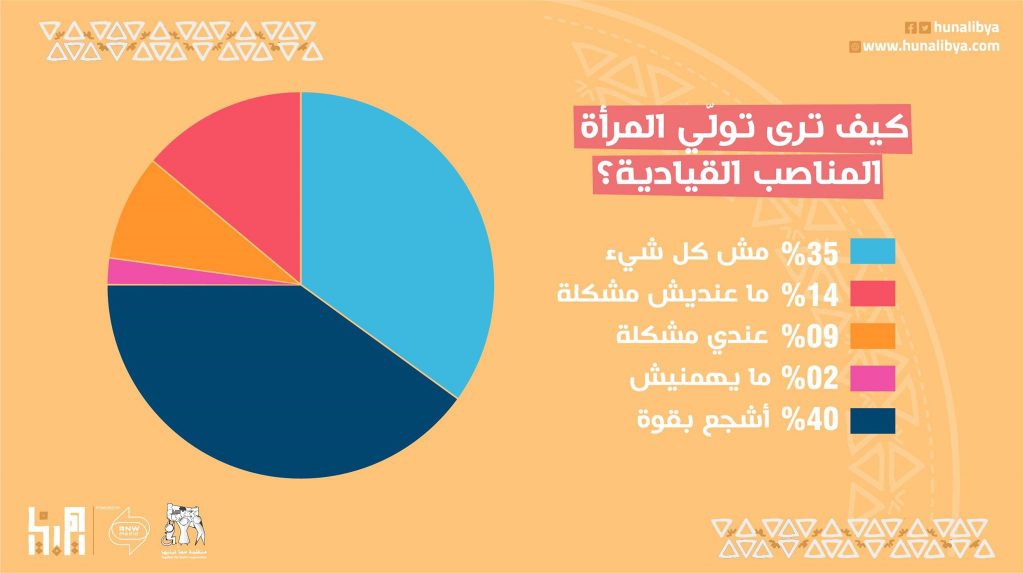
The first question was: What are the thoughts of young Libyan people on women in leadership?
This came first in the survey as a single-answer question with choices that vary from not supportive to very supportive.
The most chosen answer (chosen by 40% of respondents) was I strongly support, they’re equal to men. Unsurprisingly, 83% of people who chose this answer were women (which equals 54% of female respondents).
Meaning only 17% of male respondents fully support the idea of women in leadership roles and the equal rights between genders.
The second most chosen answer was (I don’t mind, but not in all majors) at 35%, almost equally divided between male and female respondents (53% and 47% of the 35%).
The most concerning of all answers was I do have a problem with women being in leadership positions, which was picked by 9% of respondents, most of which were males 85% (20% of the total number of male respondents).
The other choices were I don’t have a problem with it, we need to support women which got 14% and This does not concern me at 2%.
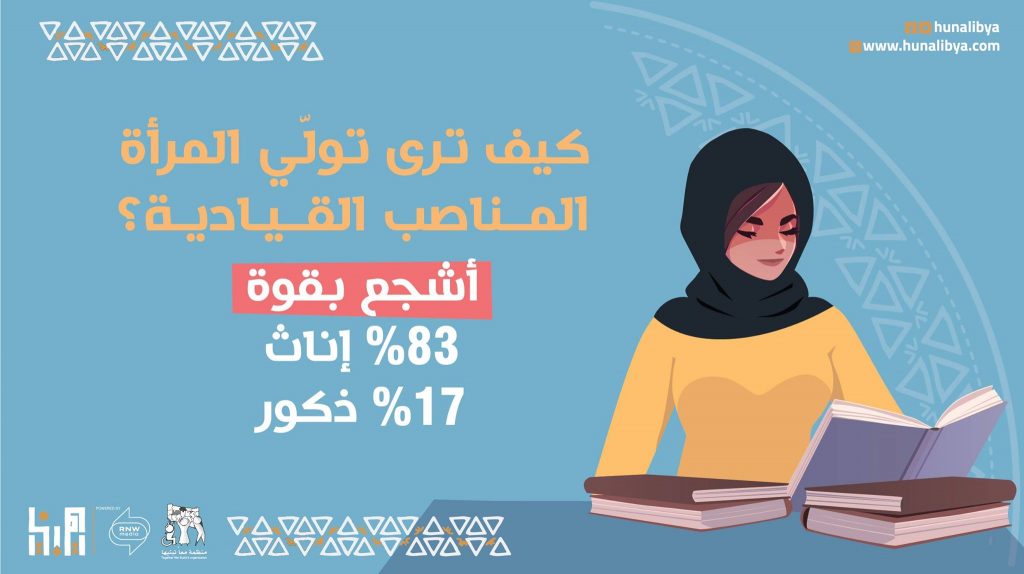
Most people who don’t support tried excusing their choice based on wrong information about female biology, religious attributes and the current security situation in the country that they think wouldn’t be a safe environment for women to work. We will be analyzing some of these answers and sharing them in a third report, so keep an eye out for it.
Most negative or non-supportive responses we received on the survey indicate the need for immediate action to change their views through awareness campaigns targeting males on the many misconceptions about women in our society, their rights to political participation as well as gender equality.
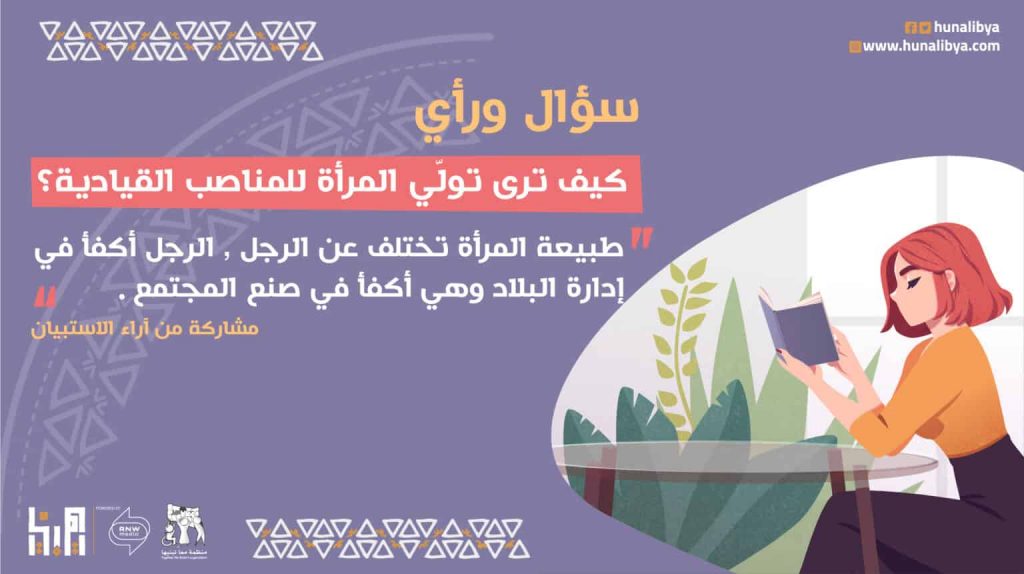
The second question was: What jobs do young people think are most appropriate for women?
This question allowed choosing multiple answers, the answers included jobs in management, army forces, education, and on a ministerial and presidential levels, in both governmental and non-governmental institutions. There was an open space for respondents to add “others”.Also, “None of the above” and “All of the above” were in the choices, and were big indicators in revealing whether the respondent wholeheartedly supports the idea or rejects it on an extreme level.
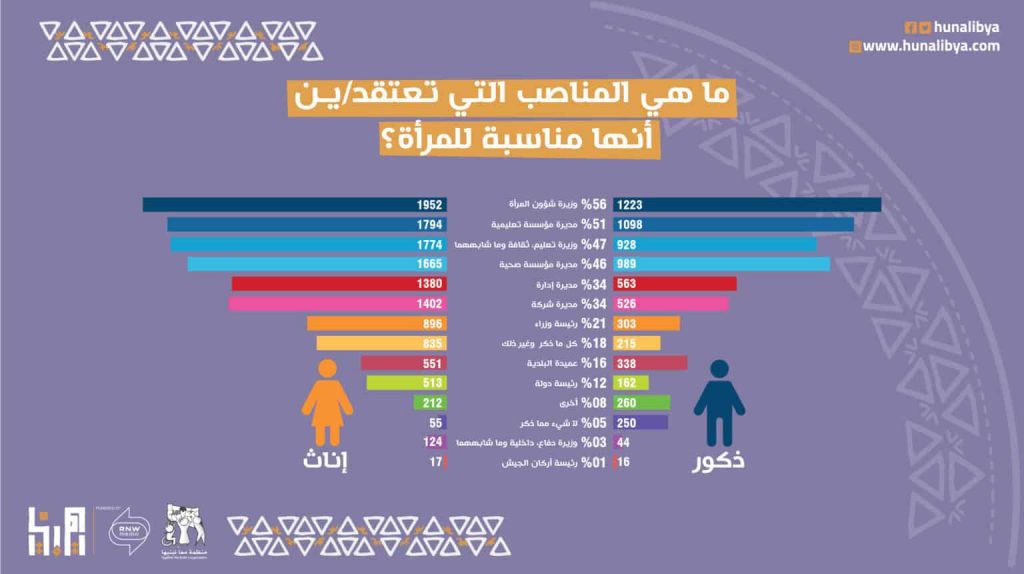
Results:
– “All of the above” represented 18% of all responses and most of them were women (80%).
– “None of the above” formed only 5% of responses and most of them were men (82%).
Of all the presented positions In the choices, the “Minister of women’s affairs” was the most picked one with 56% (3175 of respondents ) and was the first choice by both genders, while the “Chief of staff of Army forces” was picked the least at 1% and by only 33 people (51% females and 49% males).
Most importantly the “President of the country” was picked by only 675 respondents. Therefore, answers to this question have only emphasized the stereotypical image of women and their role in the society, and what the society deems ‘acceptable and unacceptable’ based solely on gender.
We’ve reached the end of the first report. We will be continuing our assessment in a second report to be published soon.

